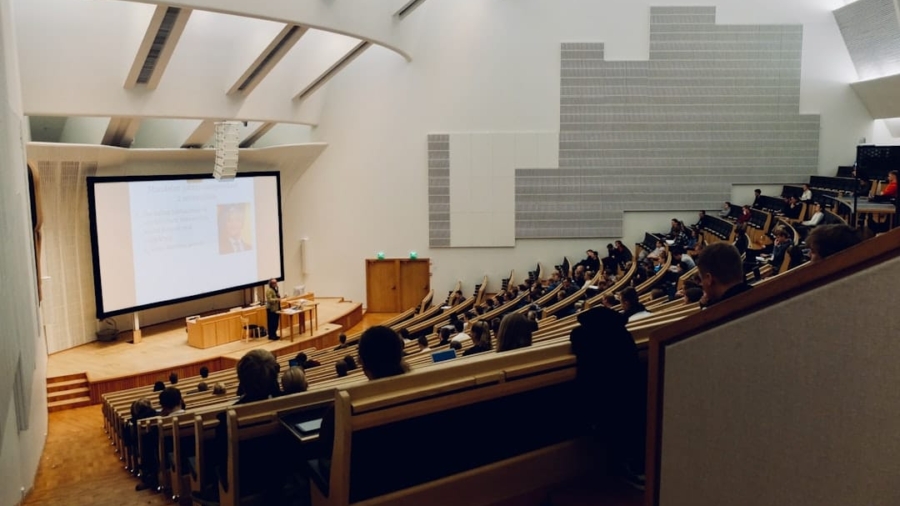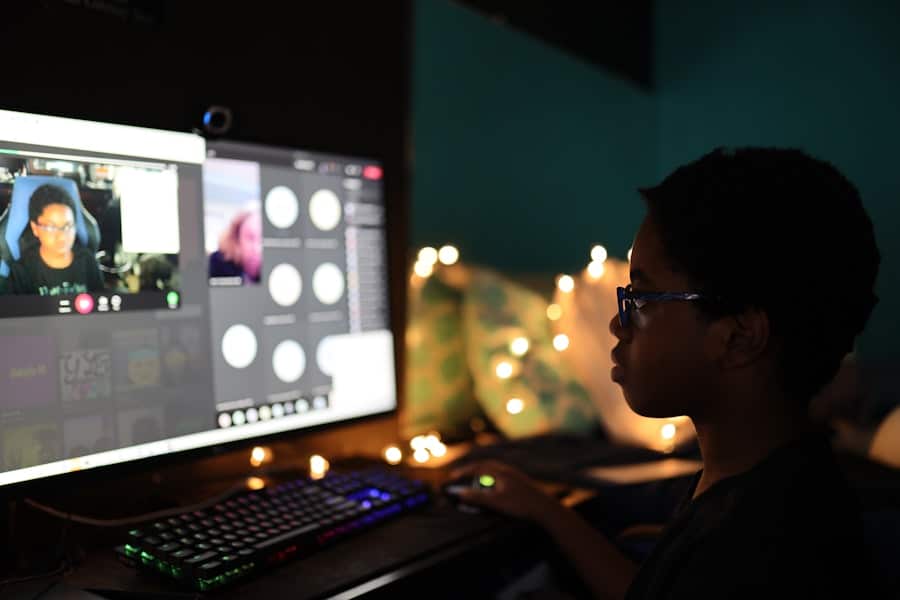Virtual Reality (VR) classrooms represent a transformative approach to education, particularly in the context of remote learning environments. By immersing students in a three-dimensional, interactive space, VR technology offers an innovative solution to the limitations of traditional educational methods. This technology allows learners to engage with content in a way that is both dynamic and experiential, fostering deeper understanding and retention of knowledge.
As educational institutions increasingly adopt digital tools, VR classrooms stand out as a promising avenue for enhancing learning experiences, especially for students who may be geographically isolated from conventional educational resources. The concept of VR classrooms extends beyond mere technological novelty; it embodies a pedagogical shift towards experiential learning. In these virtual environments, students can explore complex subjects such as biology, history, or physics through simulations that would be impossible or impractical in a physical classroom.
For instance, a student studying marine biology can virtually dive into the ocean to observe ecosystems firsthand, while another learning about ancient civilizations can walk through a digital reconstruction of a historical site. This immersive experience not only captivates students’ attention but also encourages active participation, making learning more engaging and effective.
Key Takeaways
- VR classrooms offer a new way of learning by immersing students in a virtual environment, providing an interactive and engaging educational experience.
- Students in remote communities face challenges such as limited access to resources, lack of qualified teachers, and social isolation, which can hinder their educational opportunities.
- VR classrooms can benefit remote students by providing access to high-quality education, interactive learning experiences, and opportunities for collaboration with peers from around the world.
- Overcoming barriers to accessing VR technology in remote communities requires investment in infrastructure, training for educators, and partnerships with organizations to provide necessary resources.
- Success stories of remote students using VR classrooms highlight improved academic performance, increased motivation, and expanded career opportunities, demonstrating the potential of VR technology in education.
Challenges Faced by Students in Remote Communities
Students in remote communities often encounter a myriad of challenges that hinder their educational progress. One of the most significant obstacles is the lack of access to quality educational resources and experienced educators. Many rural areas are underserved by schools, leading to larger class sizes and limited course offerings.
This scarcity can result in students missing out on critical subjects or advanced placement opportunities that are more readily available in urban settings. Furthermore, the isolation experienced by these students can lead to feelings of disconnection from their peers and the broader educational community. In addition to resource limitations, remote students frequently face technological barriers that impede their learning.
While internet access has improved in many areas, connectivity issues remain prevalent in rural regions. Slow or unreliable internet can disrupt online learning experiences, making it difficult for students to participate in virtual classes or access digital materials. Moreover, the lack of access to modern technology—such as computers or VR headsets—can further exacerbate educational inequities.
These challenges create a significant gap between students in urban centers and those in remote areas, highlighting the urgent need for innovative solutions that can bridge this divide.
The Benefits of VR Classrooms for Remote Students
VR classrooms offer a multitude of benefits specifically tailored to address the unique challenges faced by remote students. One of the most compelling advantages is the ability to provide immersive learning experiences that transcend geographical limitations. With VR technology, students can engage with complex concepts in a hands-on manner, allowing them to visualize and interact with content that would otherwise be inaccessible.
For example, a student studying anatomy can explore a 3D model of the human body, gaining insights into its structure and function that would be difficult to achieve through textbooks alone. Moreover, VR classrooms foster collaboration among students, even when they are physically distant from one another. Through shared virtual environments, learners can work together on projects, participate in discussions, and engage in group activities that promote teamwork and communication skills.
This collaborative aspect is particularly beneficial for remote students who may feel isolated from their peers. By creating a sense of community within the virtual space, VR classrooms help mitigate feelings of loneliness and disconnection, ultimately enhancing the overall educational experience.
Overcoming Barriers to Accessing VR Technology
Despite the promising potential of VR classrooms, several barriers must be addressed to ensure equitable access for all students, particularly those in remote communities. One significant challenge is the cost associated with acquiring VR technology and maintaining it over time. Schools and educational institutions may struggle to allocate sufficient funds for purchasing headsets and software licenses, especially when budgets are already tight.
To overcome this hurdle, partnerships with technology companies and grants from educational foundations can provide much-needed financial support. Another critical barrier is the need for adequate training for educators and students alike. Implementing VR technology effectively requires not only access to the hardware but also an understanding of how to integrate it into the curriculum.
Professional development programs focused on VR pedagogy can empower teachers to utilize these tools effectively, ensuring that they can guide their students through immersive learning experiences. Additionally, providing students with training on how to navigate VR environments will enhance their comfort level and engagement with the technology.
Success Stories of Remote Students Using VR Classrooms
Numerous success stories illustrate the transformative impact of VR classrooms on remote students’ educational journeys. For instance, a school district in rural Alaska implemented a VR program that allowed students to explore their local environment while learning about science and geography. By using VR headsets to simulate field trips to nearby glaciers and wildlife habitats, students gained a deeper appreciation for their surroundings and developed a stronger connection to their community.
This initiative not only enriched their learning experience but also fostered a sense of pride in their unique environment. Another compelling example comes from a remote school in Australia where VR technology was introduced to enhance language learning among Indigenous students. By immersing learners in culturally relevant scenarios—such as traditional storytelling or community events—educators were able to create an engaging context for language acquisition.
The use of VR not only improved language skills but also helped preserve cultural heritage by connecting students with their roots in an innovative way. These success stories highlight how VR classrooms can be tailored to meet the specific needs of remote learners while promoting engagement and cultural relevance.
The Role of Teachers and Educators in Implementing VR Classrooms
Equipping Teachers with Technical and Pedagogical Skills
Educators must be equipped not only with technical skills but also with pedagogical strategies that leverage the immersive nature of VR to enhance learning outcomes. This requires ongoing professional development opportunities that focus on best practices for using VR in education.
Teachers as Facilitators and Advocates
Teachers serve as facilitators who guide students through their virtual experiences, helping them make connections between what they encounter in the VR environment and real-world applications. By fostering critical thinking and encouraging reflection on these experiences, educators can maximize the educational benefits of VR classrooms. Additionally, teachers can advocate for their students’ needs by collaborating with administrators and policymakers to secure funding and resources necessary for sustaining VR initiatives.
Future Implications and Potential for Expansion of VR Classrooms in Remote Communities
The future implications of VR classrooms are vast and hold significant potential for expanding educational opportunities in remote communities. As technology continues to advance and become more affordable, it is likely that more schools will adopt VR as a standard component of their teaching toolkit. This expansion could lead to increased collaboration between urban and rural schools, allowing for shared resources and expertise that benefit all students.
This could include virtual internships or mentorship programs that connect students with professionals across various fields, providing them with valuable insights and networking opportunities that would otherwise be unavailable. The potential for personalized learning experiences through adaptive VR environments also exists, allowing students to progress at their own pace while receiving tailored support based on their individual needs.
The Impact of VR Classrooms on Education in Remote Communities
The integration of VR classrooms into education represents a significant step forward in addressing the challenges faced by remote communities. By providing immersive learning experiences that foster engagement and collaboration, VR technology has the potential to transform how education is delivered in these areas. As barriers to access are gradually overcome through funding initiatives and professional development for educators, more students will benefit from the advantages offered by this innovative approach.
Ultimately, the impact of VR classrooms extends beyond mere academic achievement; it fosters a sense of belonging and connection among remote learners while equipping them with essential skills for the future. As we look ahead, it is crucial to continue exploring ways to expand access to this transformative technology, ensuring that all students—regardless of their geographical location—have the opportunity to thrive in an increasingly digital world.
In addition to utilizing VR technology in remote classrooms, educators can also benefit from exploring the best software testing books available. These resources can help teachers ensure that the VR platforms they are using are functioning properly and providing students with a seamless learning experience. For more information on the top software testing books, check out




